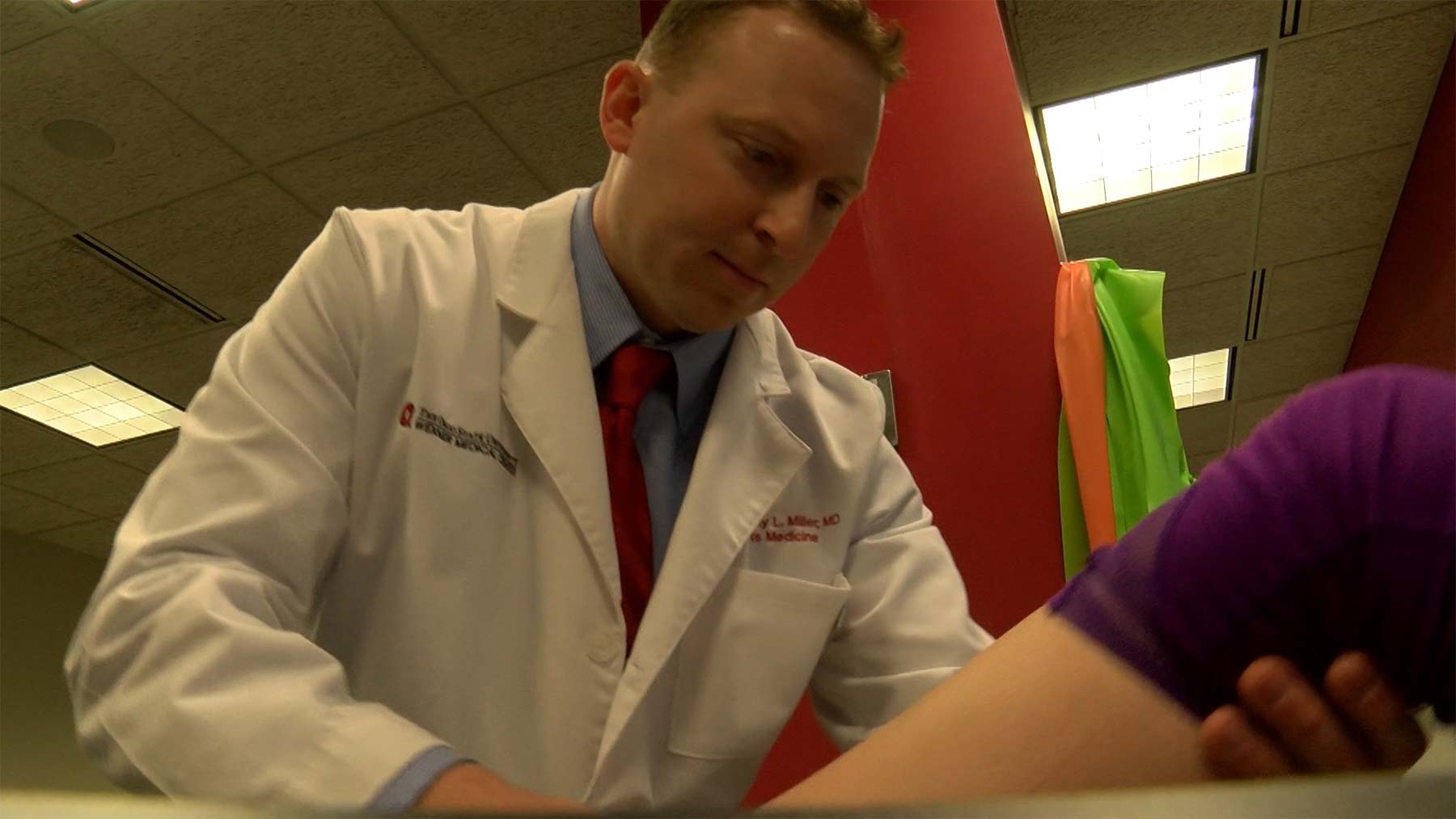BMI could be culprit when stress fractures don’t heal
 When it comes to competitive running, many say the less weight you carry the better. Quite a few runners try to keep their weight down with the assumption that the lighter they are, the faster they’ll move. After all, who can recall a marathon winner who looked flabby or overweight?
When it comes to competitive running, many say the less weight you carry the better. Quite a few runners try to keep their weight down with the assumption that the lighter they are, the faster they’ll move. After all, who can recall a marathon winner who looked flabby or overweight?
There is a difference, however, between being in shape and being dangerously skinny. In recently published research, my colleagues and I have determined that female athletes risk injury and take a longer time to heal if they are severely underweight.
We studied dozens of Division I athletes - specifically endurance runners - and found those with a body mass index (BMI) of 19 or below were more likely to develop stress fractures because their bodies were unable to handle the constant pounding that comes with running.
Even though these women had been doing high-intensity training for years, without a high enough BMI, they were still at risk of developing a stress fracture.
Why does this occur?
As muscle mass decreases, the chances of stress fractures and a number of other injuries goes up. With repetitive pounding, especially on hard surfaces, there’s increased stress to the bones, often on the lower legs and feet. For female athletes who don’t have enough soft tissue, there’s nowhere for the shock from running to be absorbed other than directly back into the bone. Eventually, microfractures happen which can progress and coalesce into one full, often troublesome fracture.
Stress fractures aren’t always visible on x-rays and usually take an MRI to diagnose. They can take anywhere from a few weeks to a few months to heal. Among those with grade 5 stress fractures -- the most severe -- our research team found that women whose BMI was 19 or higher took about 13 weeks to recover. Those with a lower BMI (below 19), took more than 17 weeks to recover and return to running -- a full month longer. Mental recovery from stress fractures is especially difficult for runners who are used to experiencing that “runner’s high,” since they’ll likely have to refrain from running during this time.
A lower BMI in athletes may be indicative of poor nutritional status, which could account for longer recovery time. Female athletes needed to build additional muscle mass and strive for a BMI of at least 20-24 to prevent the risk of developing a stress fracture, even later in their careers. So it’s extremely important for female athletes to replenish the calories they burn in training to protect from injury.
How can you prevent a stress fracture?
I take a holistic approach with the athletes I work with, and recommend the same to weekend warriors. The two most important components to any training program are moving well and eating well. I encourage a well-balanced diet, along with strength training to increase muscle mass (particularly in the lower legs) and decrease the risk of injury. Having a bit of soft tissue to help lessen the impact of repetitive running on your bones helps runners maintain strong and effective bodies. Getting more calcium and Vitamin D can also help strengthen bones.
Additionally, I stress using proper equipment, including the right footwear. If you’re new to the sport, you should build up your mileage gradually. Plus, whether you’re suffering from a stress fracture or not, I encourage adding alternative training activities such as cycling, rowing or swimming to boost your fitness regimen and keep those endorphins going.
What is considered a healthy BMI for runners?
The focus should be on health and fitness, not necessarily just the number on the scale. We know that 20-25 percent of Division I athletes will have at least one stress fracture during their college careers and there are ways to modify the risk.
According to the Centers for Disease Control and Prevention, the body mass index for an average woman is 26. However, I suggest that female athletes maintain a BMI of 20-24.
You don’t have to be very thin to be very fast. And while I certainly don’t encourage obesity, you shouldn’t strive to be completely fat free either. Be mindful of your BMI and work to keep it within optimal range. In order to “run like the wind,” it’s important you heed that age-old advice to pay attention to your body and remember that weight is just a number.

